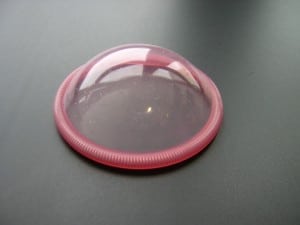Talking about STDs can be a little weird and sometimes uncomfortable. Talking about HIV/AIDS is worse. However, knowing more about it can make it seem less terrifying.
What the hell is it?
Human immunodeficiency virus, or HIV, is a virus that targets the cells of the immune system. These cells are known as CD4 cells or T cells. The virus will eventually kill so many of these cells that the body is not longer capable of fighting of infections. HIV can then lead to AIDS (acquired immune deficiency syndrome) at its most advanced stage. It is spread through bodily fluids, like blood, semen, vaginal fluids, or breast milk. But, it is not spread through spit (unless you have sores, cuts, or blood in your mouth).
Symptoms and Stages
The only sure way to know if you are infected with HIV is to get tested. Symptoms alone are not a reliable way of knowing, many people won’t have any symptoms for 10 years or more. There are three stages of HIV that are determined by time:
- The first stage, is known as acute retroviral syndrome (ARS) and occurs 2 to 4 weeks after the original infection. Sometimes people experience severe flu-like symptoms during this time. It is considered the body’s natural response to the infection. Large amounts of HIV are being created during this time.
- The following stage is referred to clinical latency, also referred to as asymptomatic HIV or chronic HIV. The virus is still active but is being reproduced at low levels. Symptoms are usually not present at this time, and this period can last for decades in some patients.
- The final stage of HIV is referred to as AIDS. At this point in the infection, the immune system is badly damaged and easily susceptible to infections. The symptoms experienced are typically those caused by other infections. When treatment isn’t given for people diagnosed with AIDS, they usually survive for around three years.
Treatment Options
Because there is no known safe and effective treatment, there isn’t a cure for HIV or AIDS. Antiretroviral therapy (ART) is a combination of drugs that can strengthen the immune system and help keep HIV from becoming more severe. Zidovudine (AZT) is often the treatment drug of choice. This method can drastically increase the life expectancy of those infected and lower their chances of infecting others. The earlier treatment is provided, the more effective it will be. Currently, researchers are exploring new options of curing HIV and reducing the virus through gene therapy.
Living with HIV
It is estimated today that 1.1 million people are living with HIV in the U.S. Because of advances in medicine and better education many people live long and fulfilling lives. Taking medications on time and accurately isn’t the only important aspect of leading a healthy life. It is important that if you are infected to always let your partner or possible partners know. There are many services that offer help and support for couples dealing with HIV as well as other STDs. It is vital to never risk possible infection, and to do this abstinence is the best option.
Preventing HIV
There are many ways you to protect yourself from HIV, or prevent the spread of HIV. If you are having sex, be sure to use latex condoms. Even female condoms will do the trick. Some condom materials, like lambskin, are porous and do not protect against HIV. Other forms of birth control, including barrier methods, will not prevent HIV. If you’re going to have oral sex with an HIV infected person (or have HIV yourself), be sure to use a condom or dental dam.
You can also get HIV through sharing needles, or any other items that have blood on them – including toothbrushes, razors, or piercing and tattoo implements. Also, be careful not to get HIV infected blood, semen, or vaginal fluids into open wounds, cuts, sores, or other bodily openings.
Learn more about STIs in our series here.
Sources
http://www.cdc.gov/hiv/
http://www.plannedparenthood.org/health-topics/stds-hiv-safer-sex/hiv-aids-4264.htm

